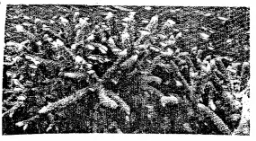Advertisements
Advertisements
प्रश्न
In the outline map of Africa, mark the features, and answer the questions.
- Colour dark green the area where equatorial forests are found. What difficulties were faced by the explorers because of rivers and natural vegetation of the region?
- Mark the area that is called an ‘open-air zoo’. Name the vegetation of this region.
- Mark the Sahara Desert. Name a plant that best survives in the climate of this region. What are the characteristic features of this plant that help it survive?
- Mark the area north of the Atlas Mountains where the Mediterranean climate is found. Which crops does this climate support?
उत्तर

- The equator passes through the middle of the continent and most of Africa lies within the tropics. It is, therefore, the hottest continent.
People faced many difficulties while exploring Africa. In the north, the Sahara, the world’s largest desert, was impenetrable due to severe heat and dry conditions. Most of Africa consists of undulating plateaus, so it was difficult to reach the interior from the coastal areas. The rivers of Africa have many rapids and waterfalls and are not fit for navigation. The extensive equatorial forests and swampy lands teeming with dangerous tsetse flies and poisonous insects discouraged explorers from entering the heart of the continent. -
These vast grassy plains with tall, coarse grasses are called the savannahs or tropical grasslands. Several varieties of grass, including elephant grass, grow here. Some acacia and baobab trees are found interspersed between the grasses. Please check Map has given on Textbook page 126 (Africa: Climatic and vegetation regions)
-
The trees have long roots, small waxy leaves, and thick spongy bark, which help them survive in the dry summers. Examples include cork, oak, laurel, olive, and fig. Forests are not extensive as most of them have been cut down and replaced by orchards of citrus fruit trees such as oranges, lemons, and grapes.
-
The trees have long roots, small waxy leaves, and thick spongy bark, which help them survive in the dry summers. Examples include cork, oak, laurel, olive, and fig. Forests are not extensive as most of them have been cut down and replaced by orchards of citrus fruit trees such as oranges, lemons, and grapes.
APPEARS IN
संबंधित प्रश्न
Give geographical reason
Belgium, the Netherlands, and Luxembourg are called the Low countries.
Give geographical reason
The Central European Plains are densely populated.
Refer to the physical map of Europe in your atlas. Moving in an anti-clockwise direction starting from the Arctic Ocean and the White Sea, observe and note down the names of all the surrounding water bodies such as seas, bays, gulfs, straits, etc. Then mark each of them on an outline map of Europe.
Choose the correct answer:
The Sudd is a
Write true or false. Correct the false statement.
Only mosses, lichens, and small colourful flowers grow in the steppes of Eurasia
The northern and southern parts of Africa have opposite seasons at any time of the year. Why?
What are the 4 o’clock showers? In which climatic region of Africa do they occur?
Why are the Eastern Highlands called the Great Dividing Range?

This is a photograph of Australia’s Great Barrier Reef. Why do you think this reef is Australia’s biggest tourist attraction.
Name the factors that influence the climate of Australia. Elaborate any two.
